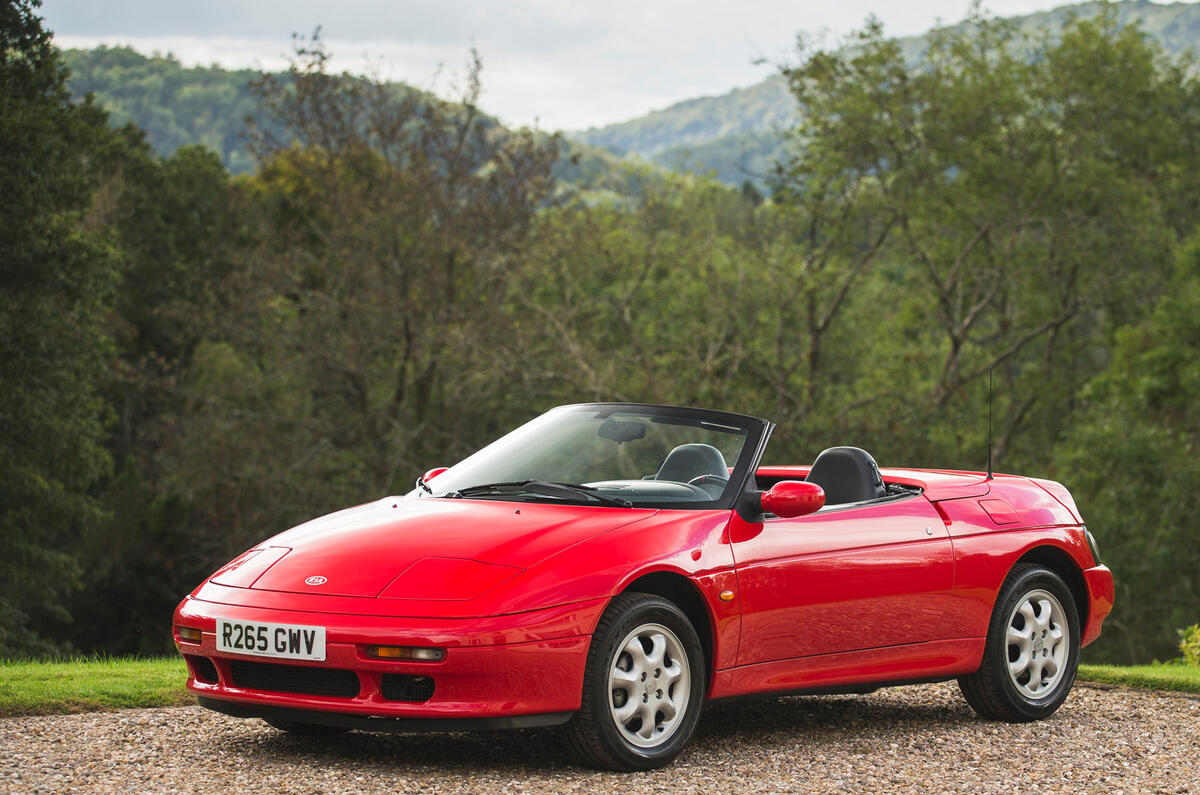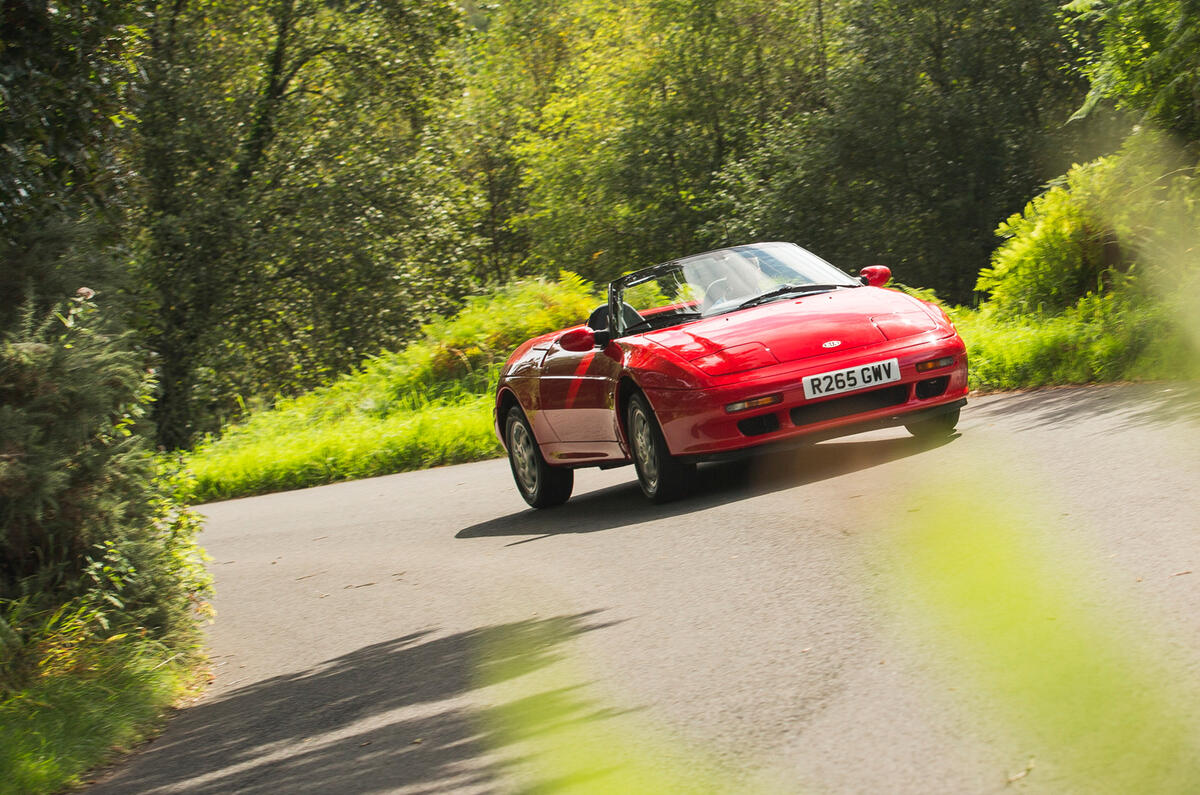The Lotus Exige and Lotus Evora have been killed off and the Emira has yet to go on sale. I expect you wouldn’t have trouble securing a slot for an Evija, but that comes with a snag in the form of a bill for two million quid.
So while we wait for the brave new world of Lotus to unfurl, we thought it might be fun to revisit some cars from the past that were technically not Lotus (don’t let the firm hear you use Lotuses or worse Loti as a plural) but which simply wouldn’t exist without a considerable amount of help from the heroes of Hethel.
So we start with what, at least in Europe, is the rarest of all. In the UK, there’s just one – and you’re looking at it – or possibly two at most. It’s the Kia Elan. Remember that? My recollection was that once production of the M100 Elan had stopped in 1995, Kia asked Lotus to build a few more and badge them Kias for sale in South Korea. And not for the first time, how I recall things happening and how they actually happened are at significant variance.
What actually happened was that Kia literally bought not only the rights to the car but all the tooling, too. The only snag was that General Motors (which owned Lotus at the time) wouldn’t let Kia use any of its parts – a considerable inconvenience when you consider that one of those parts was an engine from GM-owned Isuzu.
Undeterred, Kia pressed on, replacing 162bhp worth of turbo 1.6-litre engine for a 151bhp atmo 1.8-litre unit of its own. It changed the rear lights and replaced the orange GM dials with some white-on-black ones. It also raised the revolutionary suspension, mounted on ‘rafts’ to counteract torque steer, apparently to cope with poor road surfaces in the domestic market.
![]()
Kia did briefly consider selling its new roadster in Europe, even though GM wouldn’t have allowed the Elan name to be used, but the Kia Sports – as it would have been known – never materialised over here.
But at some stage, this sole Kia Elan did. I was never much of a fan of the M100 Lotus Elan on which it is based. Dynamically highly capable though it was, I felt it mistook fast for fun, offering rapid, effective but less than involving transport. Ultimately, I just didn’t see why people would buy it when the rear-driven Mazda MX-5 was so much more fun, cheaper and better looking. And, sadly for Lotus, the market saw it the same way.































Join the debate
Add your comment
I love the looks of the M100 Elan. Altough the rear end was better on the US version without the virtical tail cut. I owned one and it was great. The article forgets that Autocar at the time regarded it as the fastest point to point car.
There were strong rumours that Lotus had a lot to do with the fouth gen 1980's Toyota Celica.
Saw this in the early days of Kia UK on their stand at Motorfair (I think) in London at the time when the only car that Kia had on sale was the Pride hatchback,also on the stand was the soon to go on sale Mentor. It was powered by a licence built version of the Mazda 323 engine, but the staff on the stand weren't that keen at opening the bonnet and were rather cagey about why the car was on display. Not all of the Lotus Elan's were turbocharged,a non turbo version was on sale but very few were sold
Let's not forget their former owner Proton's Mitsubishi castoff the Satria GTi....